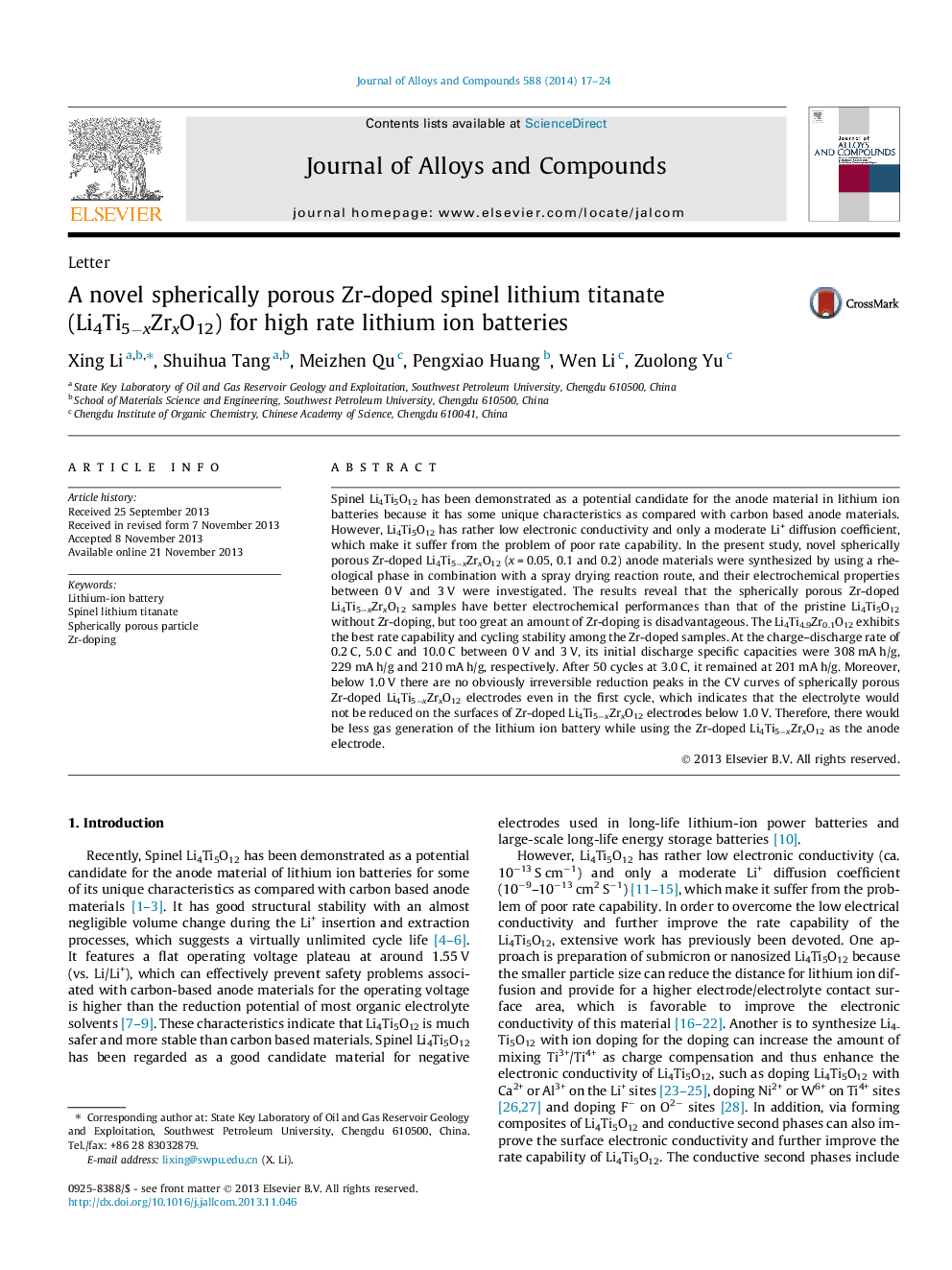| Article ID | Journal | Published Year | Pages | File Type |
|---|---|---|---|---|
| 1612141 | Journal of Alloys and Compounds | 2014 | 8 Pages |
Abstract
Spinel Li4Ti5O12 has been demonstrated as a potential candidate for the anode material in lithium ion batteries because it has some unique characteristics as compared with carbon based anode materials. However, Li4Ti5O12 has rather low electronic conductivity and only a moderate Li+ diffusion coefficient, which make it suffer from the problem of poor rate capability. In the present study, novel spherically porous Zr-doped Li4Ti5âxZrxO12 (x = 0.05, 0.1 and 0.2) anode materials were synthesized by using a rheological phase in combination with a spray drying reaction route, and their electrochemical properties between 0 V and 3 V were investigated. The results reveal that the spherically porous Zr-doped Li4Ti5âxZrxO12 samples have better electrochemical performances than that of the pristine Li4Ti5O12 without Zr-doping, but too great an amount of Zr-doping is disadvantageous. The Li4Ti4.9Zr0.1O12 exhibits the best rate capability and cycling stability among the Zr-doped samples. At the charge-discharge rate of 0.2 C, 5.0 C and 10.0 C between 0 V and 3 V, its initial discharge specific capacities were 308 mA h/g, 229 mA h/g and 210 mA h/g, respectively. After 50 cycles at 3.0 C, it remained at 201 mA h/g. Moreover, below 1.0 V there are no obviously irreversible reduction peaks in the CV curves of spherically porous Zr-doped Li4Ti5âxZrxO12 electrodes even in the first cycle, which indicates that the electrolyte would not be reduced on the surfaces of Zr-doped Li4Ti5âxZrxO12 electrodes below 1.0 V. Therefore, there would be less gas generation of the lithium ion battery while using the Zr-doped Li4Ti5âxZrxO12 as the anode electrode.
Related Topics
Physical Sciences and Engineering
Materials Science
Metals and Alloys
Authors
Xing Li, Shuihua Tang, Meizhen Qu, Pengxiao Huang, Wen Li, Zuolong Yu,
